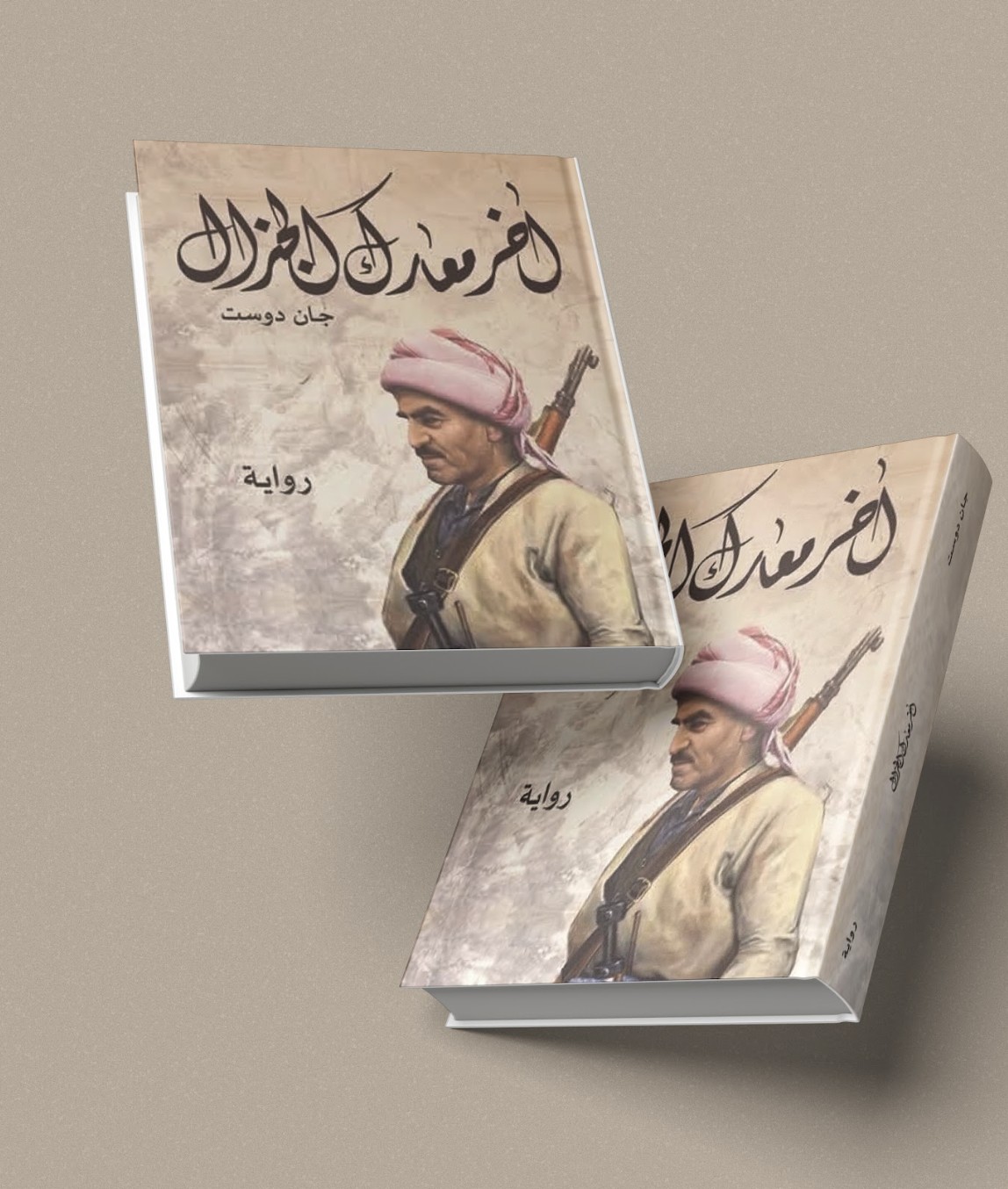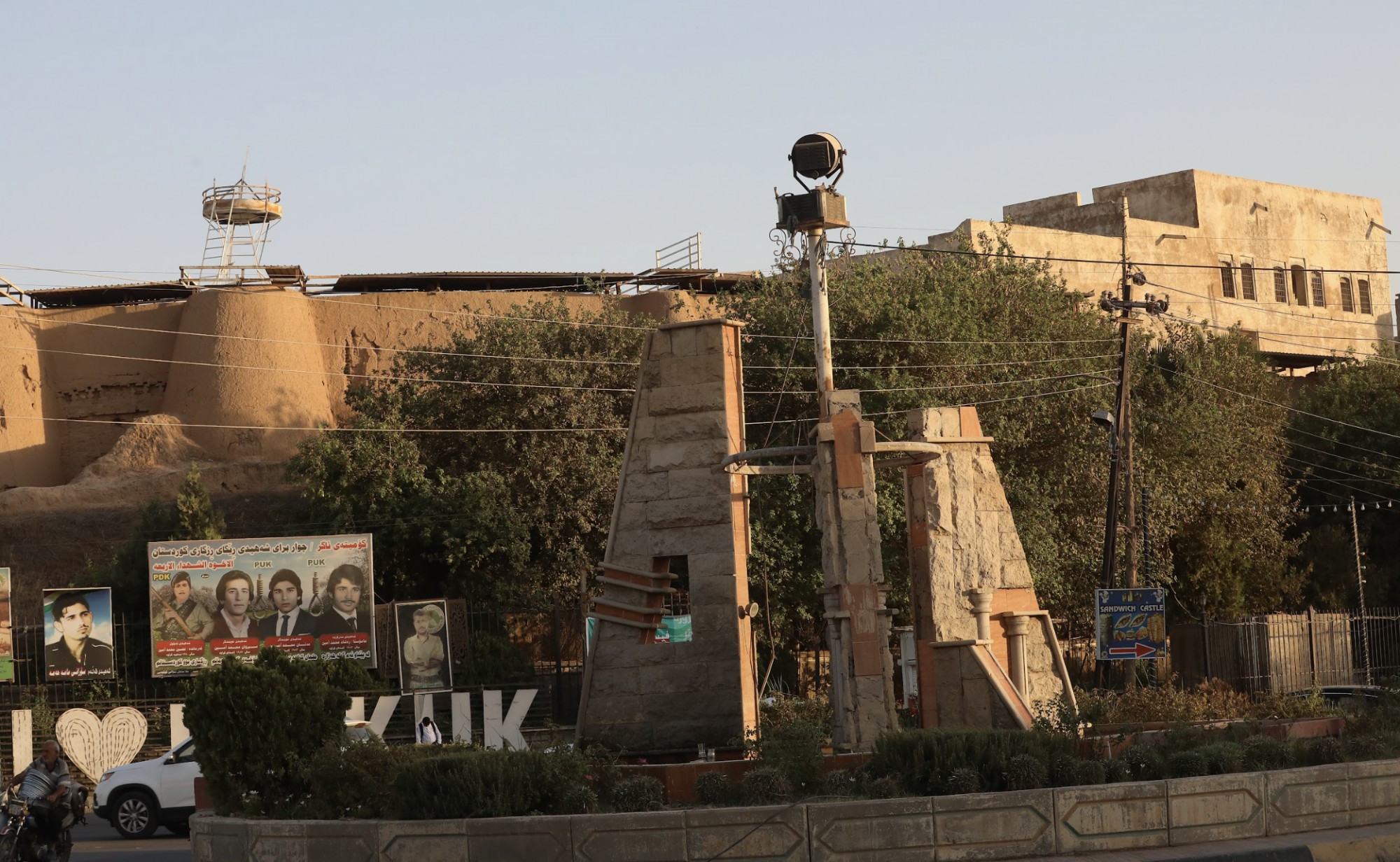Gorgis Yalda, a veteran Assyrian peshmerga fighter, has defended the Kurdistan Region for 56 years, fighting alongside his Muslim comrades. His story, interwoven with the narratives of other Assyrians who participated in the Kurdish struggle for freedom and self-determination, reveals a unique perspective on the region’s history. The article below is based on Yalda’s recent interview with Kurdistan Chronicle and provides detail into the Assyrian experience in Kurdistan, the historical co-existence between Muslims and Assyrians, and the often-unknown contributions of Assyrians to the Kurdistan Region.

Arrival of Assyrians in Erbil
A prominent Assyrian figure from the Soran District of the Erbil Governorate, Yalda detailed the geographical distribution of Assyrians in the district, mentioning their presence in the cities and towns of Diyana, Harir, and Shaqlawa, the suburb of Ankawa, and the villages of Batas, Bedial, and Hawdian.
He traced the arrival of the Assyrians to the outbreak of World War I. Initially settling in Urmia, Sain Qaleh, and Hamedan in Eastern Kurdistan (northwestern Iran), they later migrated to Baqubah in central Iraq, where they established a temporary camp.
Following the establishment of the Hashemite monarchy in Iraq, Assyrians formed a brigade called the Levies within the Iraqi army. In 1926, they arrived in the Kurdistan Region and were welcomed by Smail Beg, who was the Emir of Soran at the time. The Assyrians who would later settle in Bedial remained under the protection of the Barzani tribe, belonging to the Sherwani tribe within it.
Currently, around 200 Assyrian families reside in Diyana, Hawdian, and Bedial.
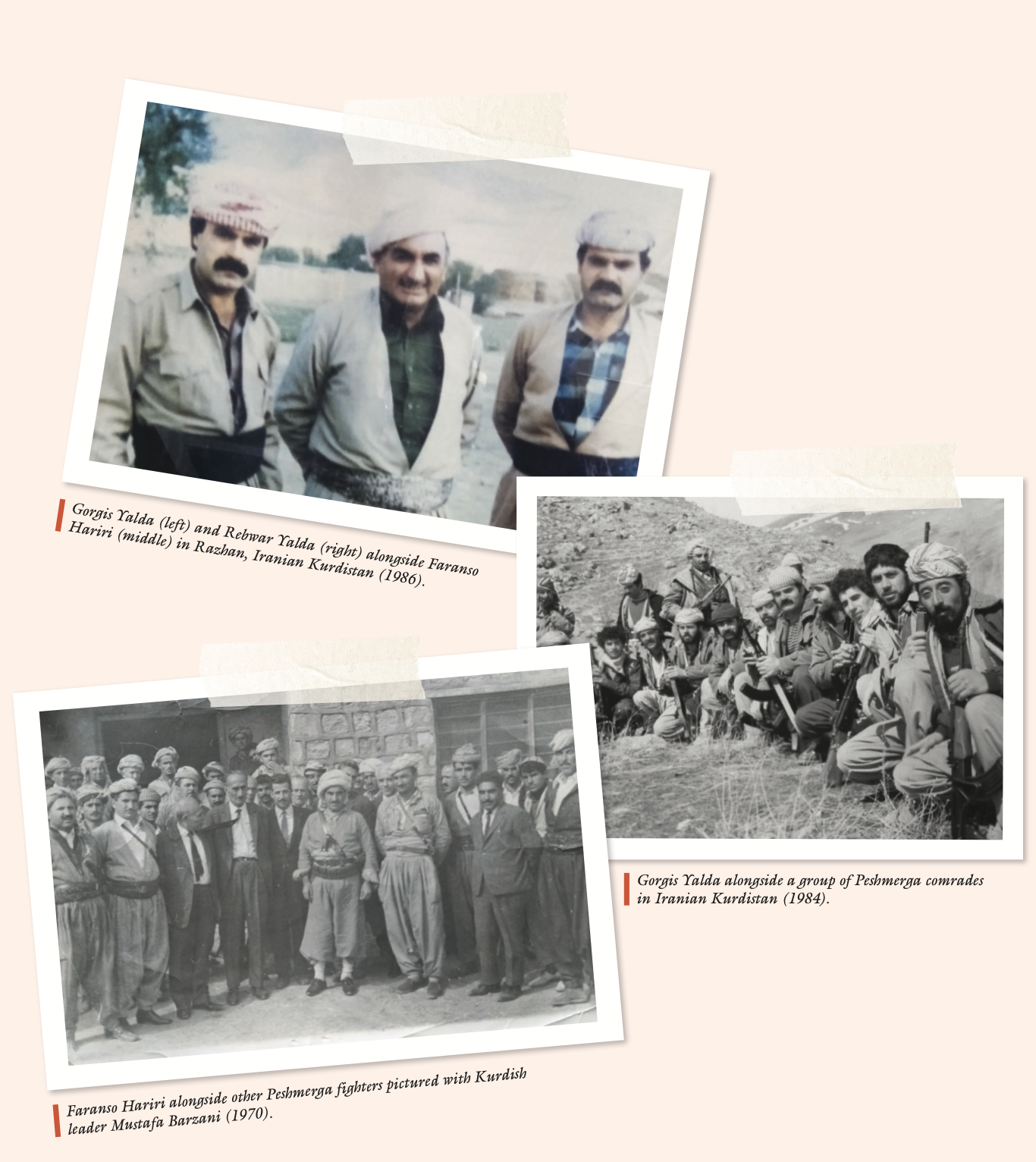
Multi-faceted roles in the revolution
In flourishing detail, Yalda recounted his own journey as a peshmerga fighter. Born in 1950 in Diyana, he completed his education alongside Kurdish and other Assyrian students. Naturally drawn to the peshmerga cause and the fight for liberation, he joined the Kurdistan Students Union in 1966. Upon being drafted into the Iraqi army, he refused and joined the peshmerga, seeking refuge in the mountains.
He initially sought to join the Balak force stationed in Galala, led by a relative, Mam Rehana Shilimon. Welcomed by Shilimon, who had accompanied Kurdish revolutionary leader General Mullah Mustafa Barzani to the Soviet Union in the late 1940s, Yalda quickly settled into his career of service. He was assigned to the fighting force of Franso Hariri, where he served until the revolution’s end in 1975.
Yalda described Franso Hariri as a prominent leader and peshmerga fighter. Joining the ranks in 1962, Hariri gained General Barzani’s respect and was entrusted with various responsibilities. Following the Iraqi-Kurdish Autonomy Agreement of 1970, Barzani appointed him as the governor of Choman in Erbil Governorate in 1974, a testament to the general’s trust in him and the skills that Hariri had demonstrated.

Hariri maintained close ties with the Barzani family and remained loyal to the Kurdish cause. Following the revolution’s collapse in 1975, he joined Barzani in Iran, along with 400 other Assyrians. Yalda highlighted Hariri’s connection with influential Assyrians in Iran. He frequently engaged with figures like Homer Assyrian, Sargun Oshana, Daniel Grespi, Dr. Wilson Betmansour, Albert Khurshid, and Yousef Maqudpour, in discussing the Kurdish revolution and its objectives. Hariri later went on to become a minister in the Kurdistan Regional Government and governor of Erbil Governorate.
Other Assyrians made different contributions. Yalda shared the story of George Shello, who played a crucial role in constructing roads vital for the peshmerga’s operations. Notably, he paved crucial routes from Qasre and Dilman in the Balakayati area to Sheladize in Duhok Governorate, earning these paths the moniker of “The George Road.” George’s dedication went beyond road building. He even personally operated the bulldozer to complete other projects, facing harsh weather conditions and the constant threat of attacks by the Iraqi army.
Another notable contribution came from Dr. Betmansour, who was one of the Assyrian doctors who treated Barzani at Jam Hospital before his departure to the United States. Yet Dr. Betmansour was not the only Assyrian medical professional to serve the Kurdish cause. Many Assyrian doctors and nurses provided crucial medical care to peshmerga fighters throughout the decades of revolution.
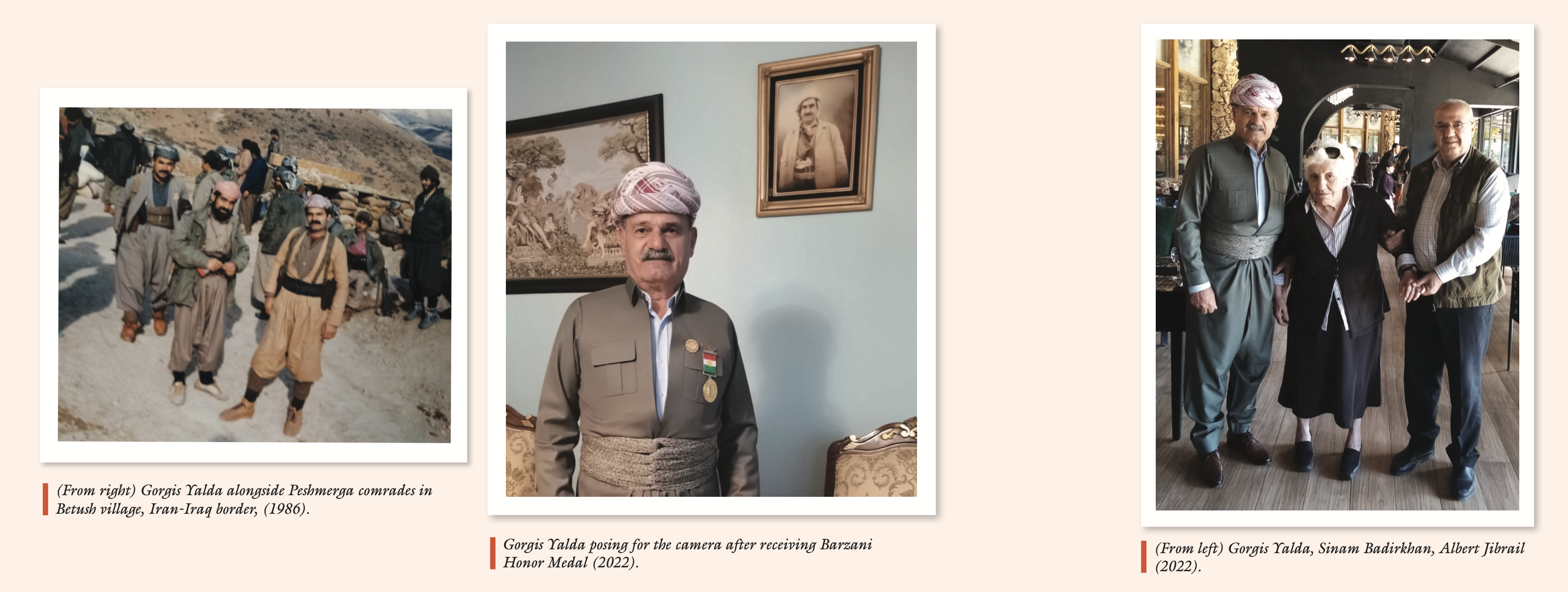
Assyrian Figures in the Kurdish Revolution
Yalda acknowledged the contributions of numerous other Assyrians during our discussions, including:
Hermoz Malkchko: Military general. Toma Thomas: Active participant in the revolution. Colonel Yousef Petros: Provided mine and explosives clearance training Nisan Kani Yohanna Idupre: peshmerga fighter. Mam Talya: peshmerga fighter. Archbishop Mary Wala: Prominent religious figure who offered spiritual guidance and support to the Kurdish people. Mikhail Binya: Peshmerga fighter. Faraidoon Wardazai: Peshmerga fighter. Adam Gorgis Margaret George: First woman to join the revolution. Bishop Francis: Religious leader who provided support to the Kurdish people during the revolution. Jardis Fathullah: Lawyer who used his legal expertise to defend the Kurdish cause. Dr. Awro: Doctor who served the peshmerga. Dr. Mushel: Doctor who served the peshmerga. Dr. Hannah Zulfa: Renowned surgeon who participated in the surgery on former Iraqi Prime Minister Abdul-Karim Qasim after his injury. He later established a hospital in Zakho specifically for treating wounded peshmerga.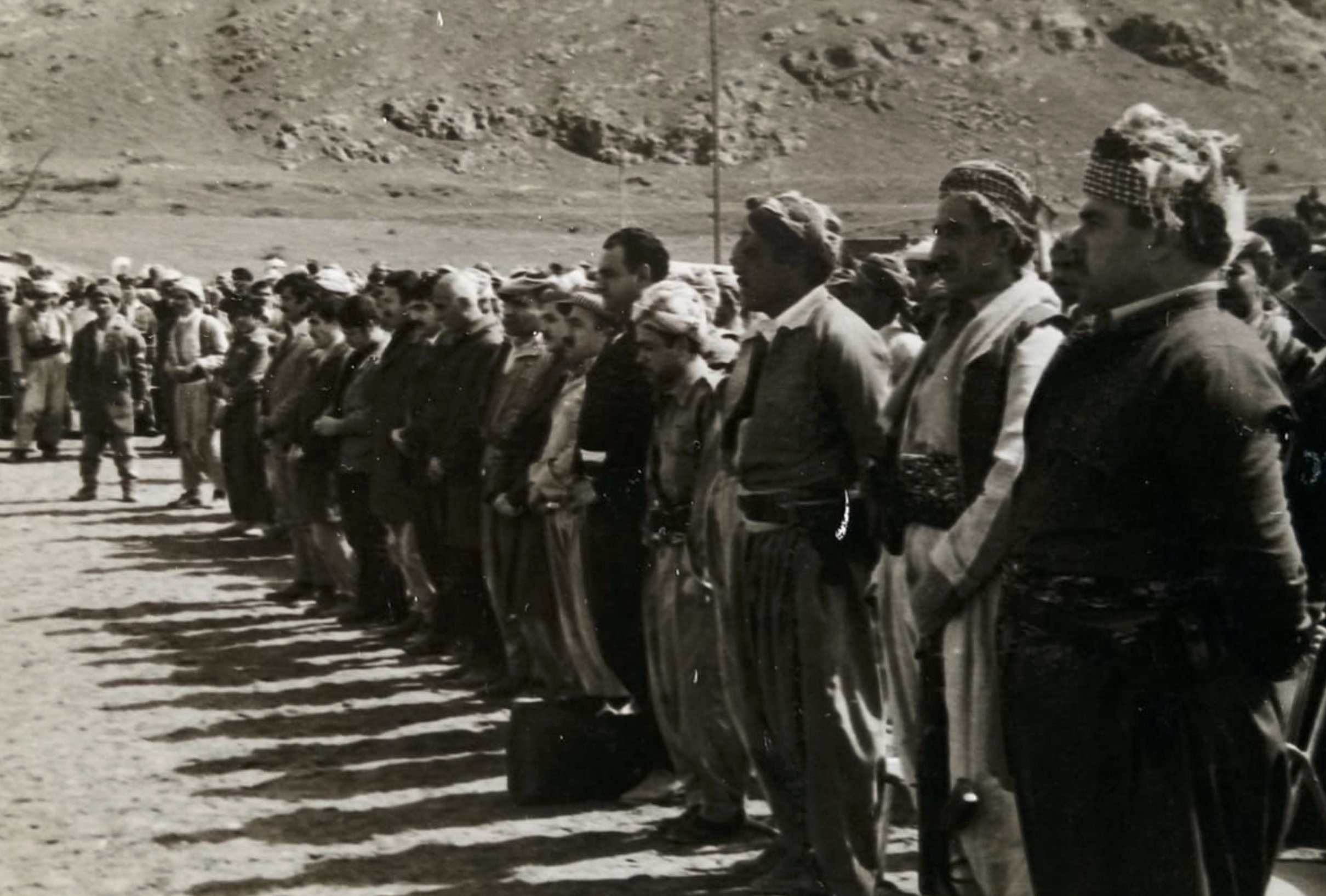
Close bonds in unity
Yalda emphasized the strong sense of camaraderie among peshmerga fighters, as well as the absence of any religious discrimination. He notes that his experience of 56 years serving alongside both Muslim and Assyrian comrades had fostered mutual respect and unity.
Symbolic of this relationship between Kurdish and Assyrian leaders was the close bond between General Barzani and Archbishop Mar Yousef Khannani, the Bishop of Harir and Batas. Their friendship was exemplified by their meeting in 1961, when Barzani sought counsel from him before taking refuge into the mountains. Despite advocating for negotiations, the Archbishop ultimately respected Barzani’s decision and wished him well.
Yalda also addressed the tragic event of 1963 when the Iraqi army attacked Assyrian communities in Harir and Batas. This assault resulted in the martyrdom of several individuals, including Joam, Qushan, Jabali, and Victoria, and forced many Assyrians to flee their homes and seek refuge in Erbil, Baghdad, and Kirkuk. Yalda emphasized the devastating impact of this attack on the Assyrian community and the ongoing struggle for justice and recognition for the victims.
Yalda concluded his time with Kurdistan Chronicle by emphasizing the positive treatment that Assyrians have received in the Kurdistan Region, acknowledging that they have even benefited more than some Muslim communities in certain aspects.
He also reiterated the unwavering support of the Assyrians for the Kurdish cause, particularly the Barzani family. He believes that the Kurdish people deserve an independent state and urges international powers to support the region’s aspirations for peace and security.
He concluded with a powerful statement: “The future of Kurdistan lies in unity and co-existence. The sacrifices made by Assyrians and Kurds alike during the revolutions stand as a testament to the strength and resilience of our communities. We must continue to work together to build a brighter future for all.”
Mohammad Dargalayi is a journalist and photographer with 14 years of experience. He is a member of IFJ Global.
